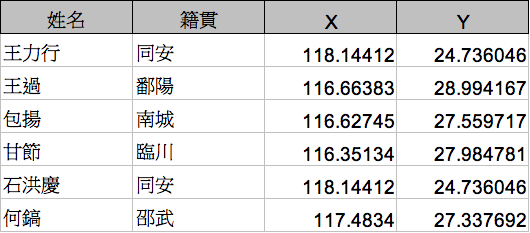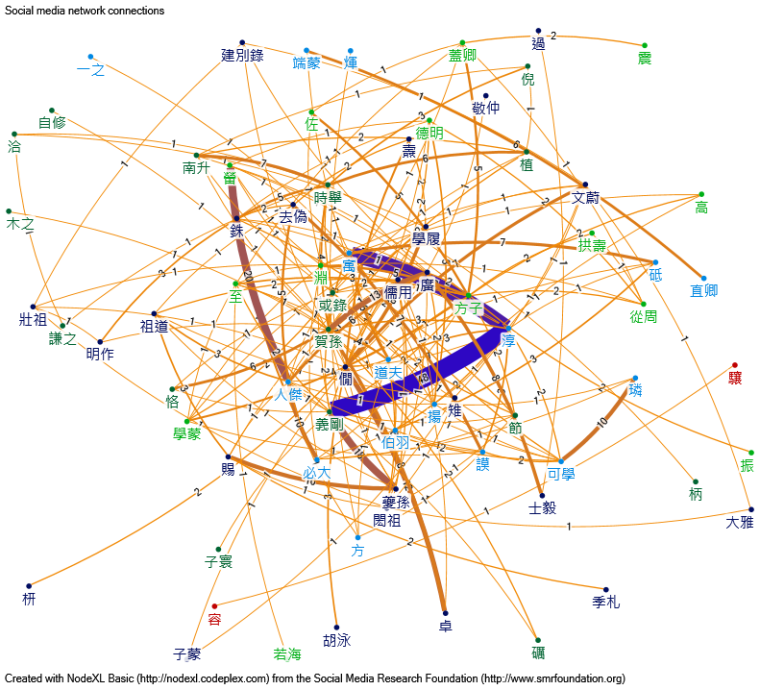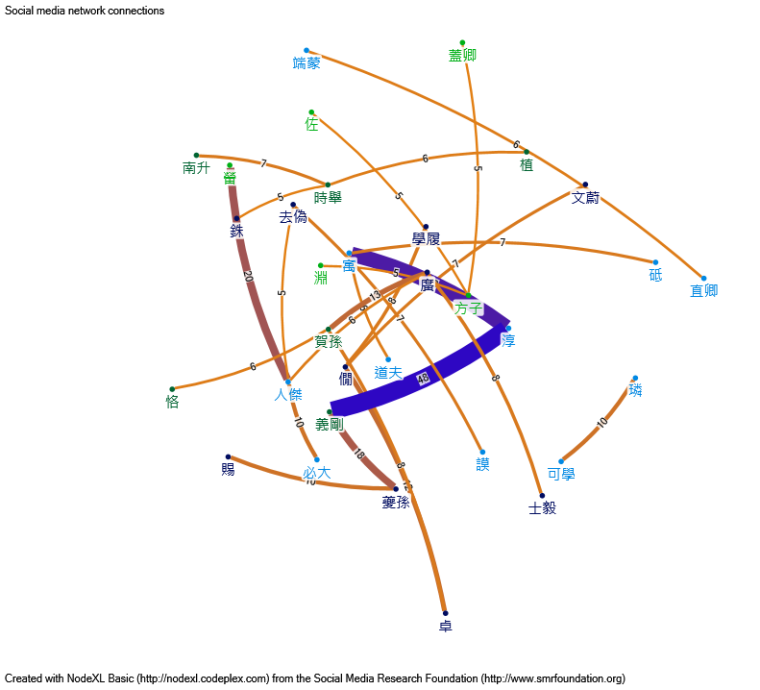In my study on the recorders of the Zhuzi yulei 朱子語類 (Conversations of Master Chu, Arranged Topically), I use MARKUS to identify personal names, place names, and official titles in the text.

Then I extract the recorders’ main geographical addresses and the associated geographical coordinates by linking the person ids provided in MARKUS to the China Biographical Database (CBDB).

Putting these addresses on a map, we can observe the geographical distribution of the recorders.

Figure 1 Geographical Distribution of the Recorders (by Mao Yuan-heng)
We can also get all Zhu Xi’s disciples from CBDB and do a comparison with the previous distribution map.

Figure 2 Geographical Distribution of Zhu Xi’s Disciples (by Mao Yuan-heng)
Some items in the Zhuzi yulei have more than one recorder -- probably a result of transcription or because multiple disciples heard the same conversation from Zhu Xi. We can use this as a criterion to group the recorders. If we suppose that those who recorded the same item share a tie and group them together, we can obtain the following social network graph.

We can simplify the graph by only counting those who recorded the same item more than five times:

Thus in terms of recording, we can separate the recorders into groups based on those who recorded the same items.

MARKUS also makes it easy and fast to get some specific information in a text, such as which place names, personal names or official titles are mentioned most frequently.
Chu Ping-tzu, Associate Professor, National Tsing Hua University